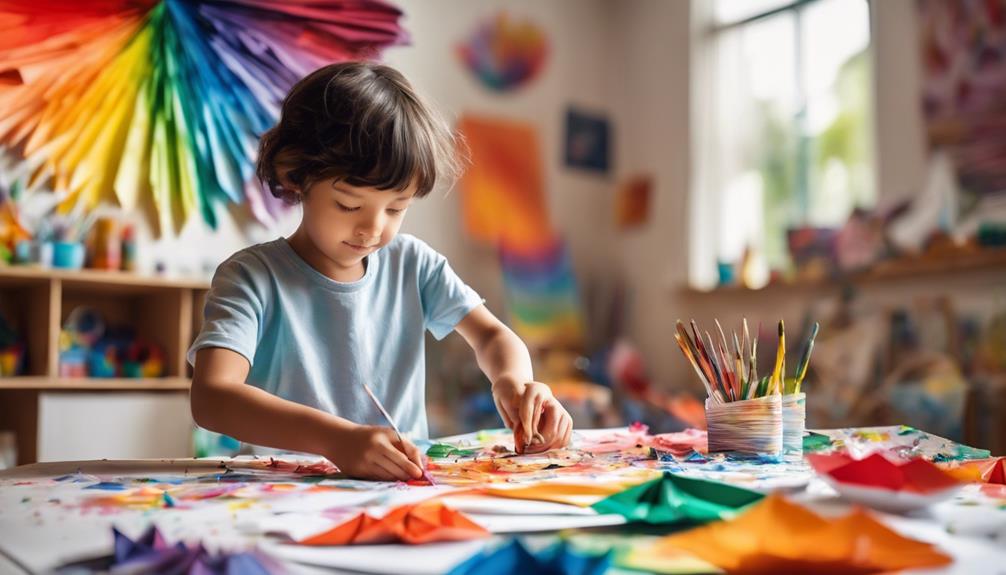Empowering students involves recognizing their strengths, tailoring lessons to their interests, and fostering confidence. Effective strategies include offering guidance, positive reinforcement, and teaching resilience. Encouraging personal growth and leadership, setting clear expectations, and addressing behavior promptly are key components of a successful blueprint for student success. By implementing a personalized approach focused on each student's abilities and ambitions, educators can create a supportive environment that cultivates both academic achievement and personal development. Supporting students in recognizing the correlation between effort and success is essential for their long-term growth and prosperity. Additional insights await for those seeking to empower students further.
Key Takeaways
- Identify and nurture students' strengths and interests for personalized learning experiences.
- Reinforce positive growth by focusing on improvements and offering guidance.
- Build confidence and resilience through support and teaching coping strategies.
- Encourage personal development and leadership by setting goals and providing guidance.
- Implement effective behavior management with clear expectations and positive reinforcement.
Identifying Student Strengths and Interests
Teachers should actively identify and document students' strengths, hobbies, and interests to better tailor their lessons and support individual growth. By recognizing what students excel in and what they enjoy, educators can create more engaging and personalized learning experiences. Understanding a student's strengths allows teachers to assign tasks that play to those abilities, fostering a sense of accomplishment and confidence.
Additionally, incorporating a student's interests into lessons can increase motivation and overall enjoyment of the subject matter. By acknowledging and appreciating each student's talents and hobbies, teachers can create a positive and inclusive classroom environment that values individuality and celebrates diversity. Ultimately, this approach helps students feel seen, valued, and supported in their educational journey.
Reinforcing Positive Growth and Recognition

Fostering a culture of positive reinforcement and recognition is essential for nurturing student growth and development. By focusing on improvements and offering guidance to students facing challenges, educators can encourage proactive problem-solving and discussion of long-term goals.
Providing sincere rewards and feedback reinforces positive behavior, motivating students to continue their progress. Acknowledging and appreciating student accomplishments not only boosts their confidence but also cultivates a sense of pride in their efforts. This recognition helps students see the value in their education and believe in their abilities.
Building Confidence and Resilience

Developing students' confidence and resilience is essential for their growth and success in the classroom and beyond. By creating a supportive environment and helping students recognize the value of their education, teachers can nurture self-belief and the ability to bounce back from setbacks.
Cultivating positive teacher-student relationships and teaching coping strategies can aid in building resilience. Encouraging a positive attitude towards challenges and modeling resilience can also empower students to face obstacles confidently.
Encouraging Personal Development and Leadership

Encouraging students to set goals and pursue personal growth can lead to the development of leadership skills and a sense of purpose within the classroom. By discussing ambitions and supporting their achievement, teachers can help students recognize the correlation between effort and success.
Offering guidance and opportunities for students to take on leadership roles fosters a culture of respect, positivity, and continuous learning. Through this encouragement, students not only grow personally but also develop essential leadership qualities that can benefit them both academically and in their future endeavors.
Implementing Effective Behavior Management

Teachers consistently employ effective behavior management strategies to guarantee students and maintain a positive classroom environment. By setting clear expectations and rules, teachers can create a structured learning environment where students feel safe and supported.
Utilizing positive reinforcement, such as verbal praise and rewards, helps reinforce desired behaviors and encourages students to stay on track. Consistent communication about expectations and consequences ensures that students understand the importance of accountability.
By addressing behavior issues promptly and fairly, teachers can prevent disruptions and maintain focus on learning. Implementing strategies like behavior charts, individualized behavior plans, or peer mediation can also be beneficial in addressing specific student needs.
Frequently Asked Questions
How Can Teachers Address Individual Student Interests in Group Projects?
To address individual student interests in group projects, teachers can identify strengths and align lessons accordingly. They should assign roles based on strengths and acknowledge talents. Tailoring projects to interests fosters engagement and collaboration.
What Are Some Creative Ways to Reward Student Improvements?
Rewarding student improvements can be done creatively by organizing recognition ceremonies, offering personalized notes of appreciation, allowing students to choose rewards, and implementing a peer appreciation system. These gestures boost motivation and foster a positive learning environment.
How Can Teachers Help Students Cope With Failure and Setbacks?
Teachers can help students cope with failure and setbacks by encouraging resilience, providing emotional support, teaching coping strategies, and promoting a growth mindset. Acknowledge efforts, offer guidance, and foster a positive attitude towards challenges.
What Strategies Can Be Used to Encourage Students to Set Ambitious Goals?
To encourage students to set ambitious goals, teachers can inspire them to dream big, provide support in goal-setting, offer guidance on overcoming obstacles, and celebrate milestones along the way. Positive reinforcement and nurturing self-belief are key.
How Can Teachers Effectively Address Specific Challenging Behaviors in Students?
When addressing challenging behaviors in students, teachers act as gardeners, nurturing growth. By setting clear expectations, providing consistent feedback, and offering support, teachers can help students navigate difficulties, learn from mistakes, and cultivate positive habits.
Conclusion
To sum up, by embracing student strengths, providing positive reinforcement, fostering confidence, and resilience, educators can empower their students towards success.
Fostering personal growth and implementing effective behavior management techniques are key components in creating a supportive environment that nurtures growth and development.
With the right approach, students can discover their true potential and work towards excellence.
Are you ready to empower your students and watch them flourish?











